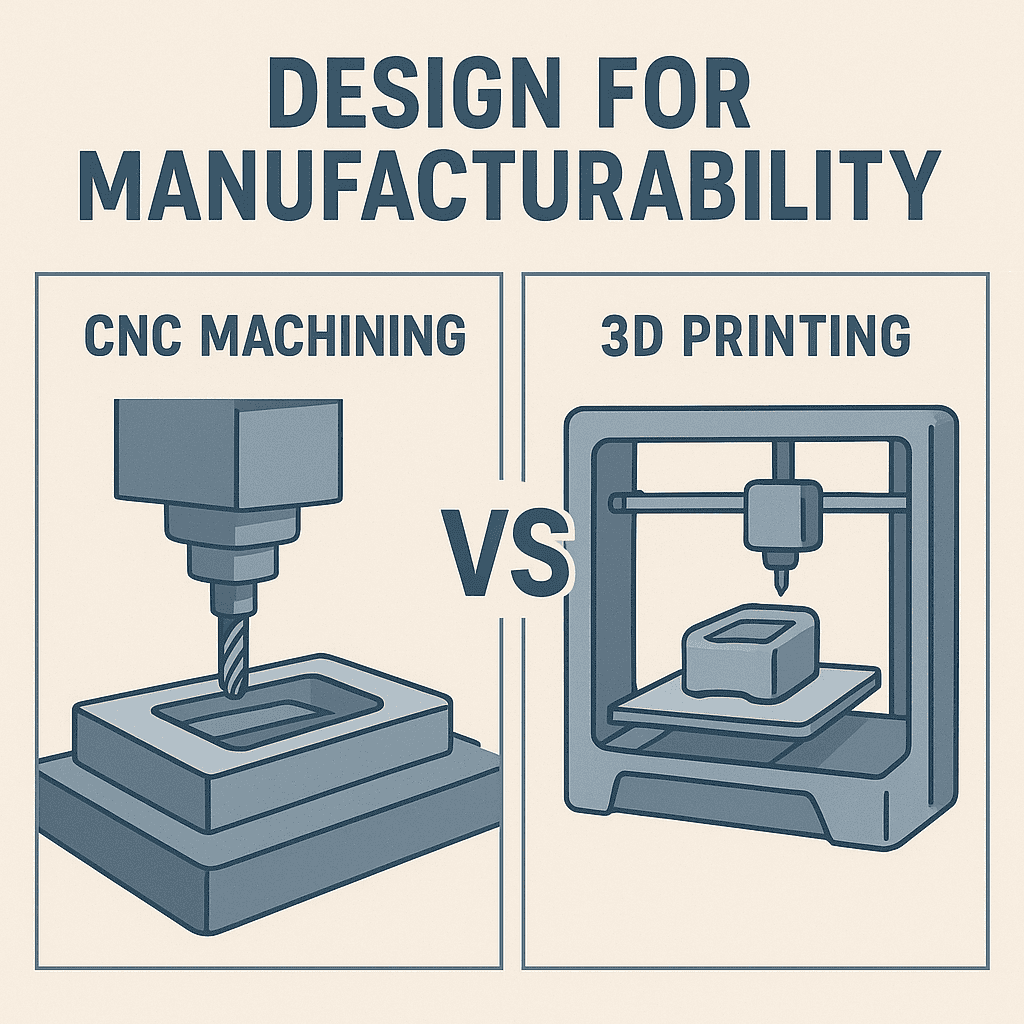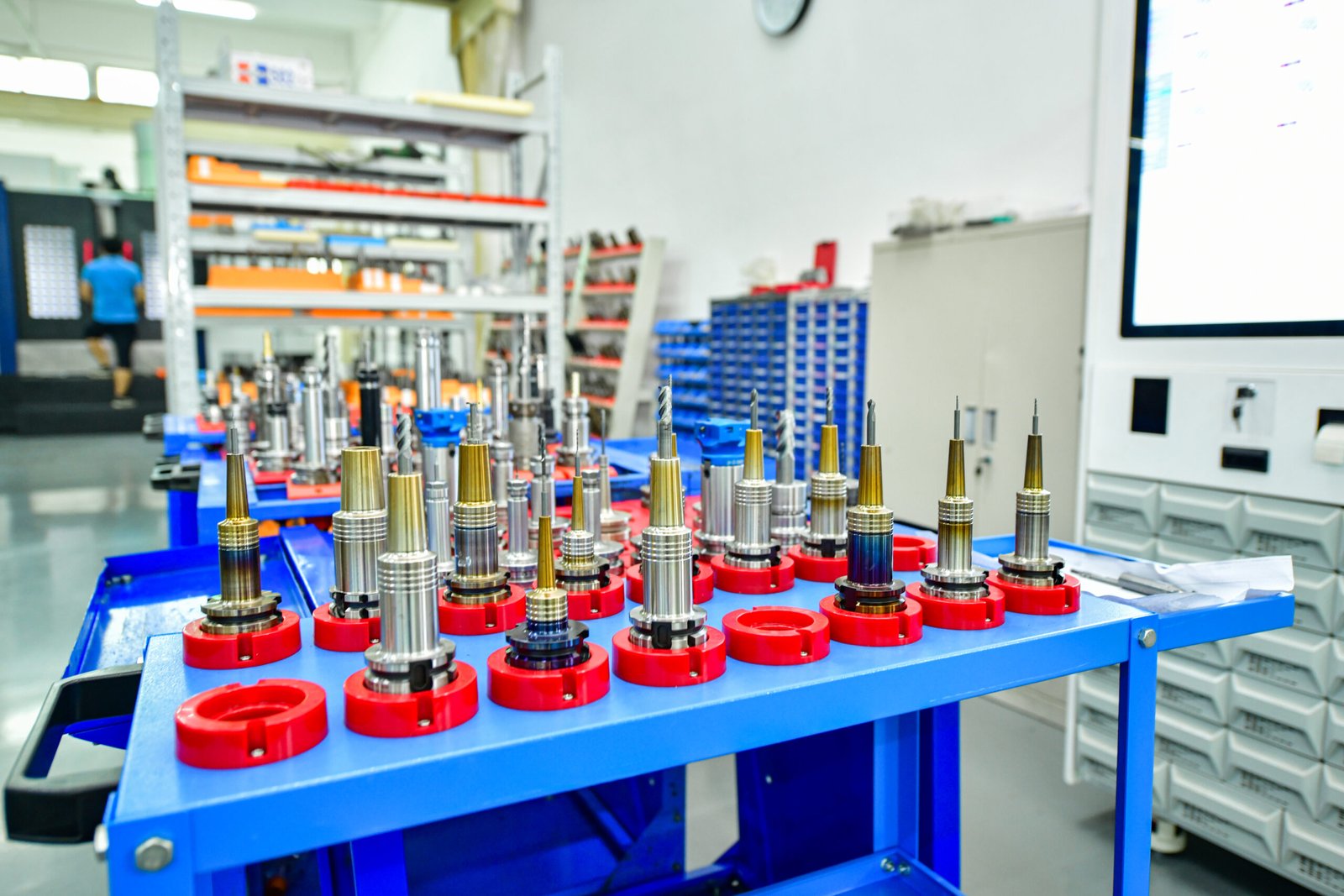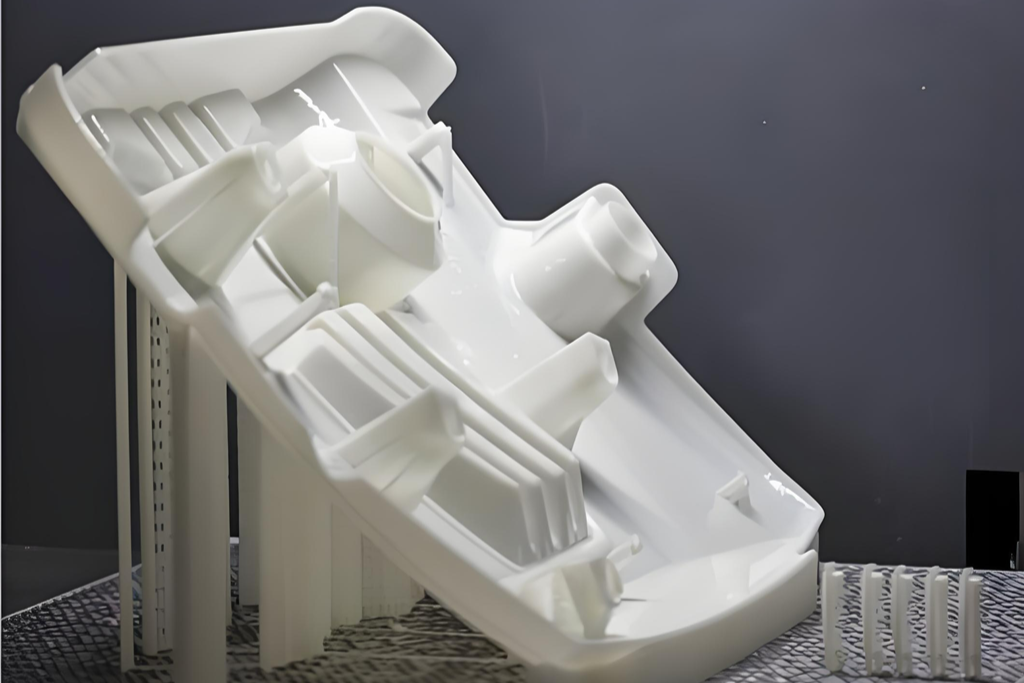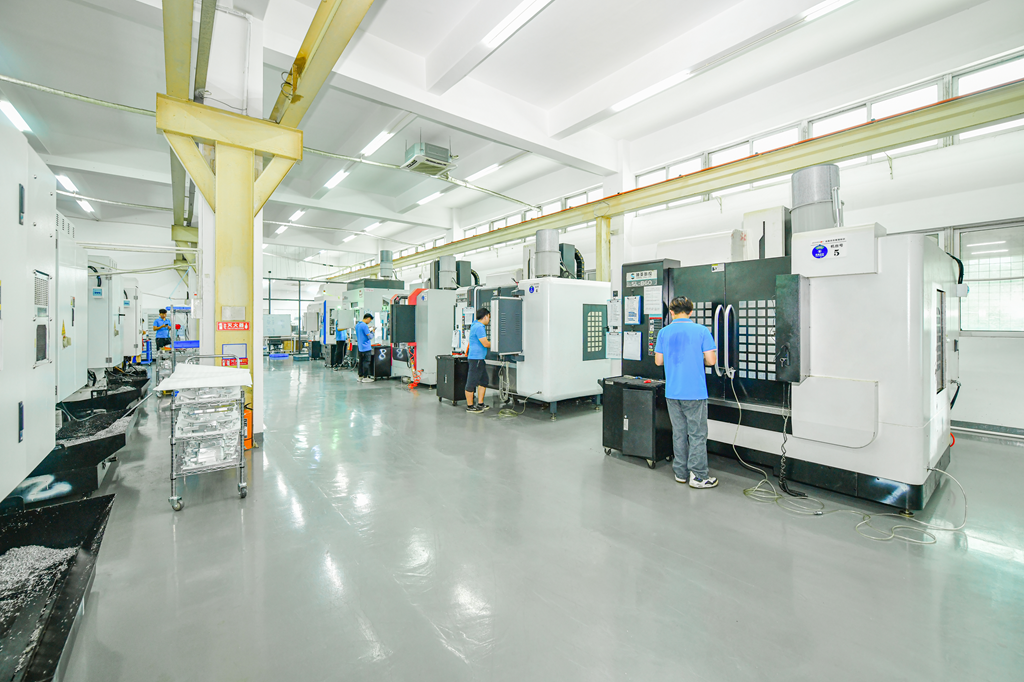Introduction: The $5,000 Mistake We Caught in 5 Minutes
At Samshion Rapid, a client once sent us a complex aluminum housing design. It looked perfect on screen. But our engineers spotted it immediately: a beautiful, completely un-machinable internal corner.
Fixing it before production took a 5-minute design tweak. If we had machined it as-is, it would have required a custom tool, special fixturing, and over 15 hours of extra labor, adding more than $5,000 to the bill and two weeks to the timeline.
This isn’t an uncommon story. It’s a classic failure of Design for Manufacturability (DFM).
DFM isn’t about limiting creativity. It’s a collaborative process between designer and manufacturer to optimize a part for production. It’s the secret sauce that transforms a good design into a great, cost-effective, and reliable product.
Part 1: The Core Principles of DFM – A Mindset, Not Just a Checklist
Before we dive into specifics, understand these five universal DFM pillars:
- Process Selection: Is your part best suited for CNC machining, 3D printing, or sheet metal fabrication? Each has different capabilities and constraints. We’ll help you choose.
- Design Simplicity: Reduce part count. Can multiple components be consolidated into one? Simplification reduces assembly time, cost, and potential failure points.
- Material Choice: Does your material choice match the part’s function, the production process, and your budget? An over-specified material can needlessly inflate costs.
- Standardization: Use standard tool sizes, fastener types, and materials whenever possible. Designing a hole for a custom, non-standard screw will cost you dearly.
- Tolerance Rationalization: Not every dimension needs to be ±0.025mm. Tightening tolerances exponentially increases cost. Only apply critical tolerances where they are functionally essential.
Part 2: DFM for CNC Machining – Your Practical Checklist
CNC is a subtractive process. You pay for the material you buy and the material you cut away. Time is money. Here’s how to design efficiently:
| Design Mistake | The Problem | The DFM Solution |
|---|---|---|
| Sharp Internal Corners | End mills are round; they cannot create sharp corners. | Add a corner radius. A radius even 0.5mm larger than the tool’s radius allows for a smoother tool path and faster machining. |
| Unreachable Features | Features on multiple sides require re-fixturing, which increases cost and introduces alignment error. | Design for minimal set-ups. Can the part be made in 2 or 3 setups instead of 5? Our 5-axis machines can help, but design simplification is key. |
| Excessively Thin Walls | Thin walls (<0.8mm for metals, <1.5mm for plastics) can vibrate or deflect during machining, ruining accuracy. | Maintain robust wall thickness. Design walls with a minimum of 1mm for metals and 2mm for plastics to ensure stability. |
| Deep, Narrow Cavities | Long tools are weak, vibrate, and break easily. Machining becomes slow and expensive. | Limit cavity depth to 4x their width. Use a draft angle of 1-3° on cavity walls to allow for easier tool access and better surface finish. |
| Non-Standard Hole Sizes | A 3.1mm hole requires a custom tool. A 3.0mm or 3.2mm hole uses a standard, inexpensive drill bit. | Use standard drill bit sizes. Consult our standard tool list to avoid custom tooling charges. |
Part 3: DFM for 3D Printing – Leveraging Freedom, Managing Limitations
3D printing (additive manufacturing) offers incredible geometric freedom, but it has its own rules.
| Design Mistake | The Problem | The DFM Solution |
|---|---|---|
| Ignoring Support Structures | Supports are necessary for overhangs but add post-processing time, cost, and can leave blemishes. | Design self-supporting angles. Keep overhangs below 45 degrees to minimize supports. Use chamfers instead of fillets on downward-facing edges. |
| Isolated trapped material | In powder-based processes (SLS, DMLS), unused powder must be able to escape from internal channels. | Add escape holes for unused powder. Avoid designing fully enclosed hollow cavities without a way to clean them out. |
| Ignoring Anisotropy | 3D printed parts are often weaker in the build direction (Z-axis) due to layer adhesion. | Orient your part strategically. Consider load directions and discuss optimal print orientation with our engineers. |
| Large, Flat Surfaces | Can be prone to warping due to residual stress, especially in SLS and DMLS. | Add gentle curves or ribs to large flat surfaces to improve structural rigidity and prevent warping. |
Part 4: The Samshion Rapid DFM Process – A Partnership With Our Engineers
At Samshion Rapid, we believe DFM is a conversation, not an automated report. It’s the core of how we partner with you to ensure success.
- You Share Your Vision: Send us your CAD files and project requirements.
- Expert-Led Design Review: A dedicated manufacturing engineer—not an algorithm—meticulously reviews your design against our 12-point DFM checklist. They analyze geometry, material selection, tolerances, and potential production challenges specific to your project.
- Personalized, Actionable Feedback: Within 24 hours, you receive a personalized consultation. This includes:
- Visual Markups: Clear screenshots of your model with specific callouts.
- Detailed Suggestions: A direct conversation or detailed report explaining each potential issue and a specific, actionable recommendation for improvement.
- Transparent Cost-Benefit Analysis: We tell you exactly how a change will affect cost and timeline. “If you adjust this tolerance, you can save 15%,” or “If you add this radius, we can cut the machining time in half.”
- Collaborative Iteration: We work directly with you to revise the design until it’s perfectly optimized for manufacturing, without compromising its intent.
Conclusion: Don’t Guess. Partner with Manufacturing Experts.
A great design is only great if it can be manufactured reliably and economically. DFM is the bridge between brilliant ideas and tangible products.
By partnering with us early, you’re not just getting a quote; you’re gaining a strategic advantage. You empower your design with manufacturing intelligence, ensuring your product gets to market faster, cheaper, and better.
Ready to Experience the Difference of Expert-Led DFM?
Send us your CAD file today for a free, no-obligation DFM analysis and manual quote. Our engineers are ready to provide the personalized insights you need to perfect your design and optimize it for production.




